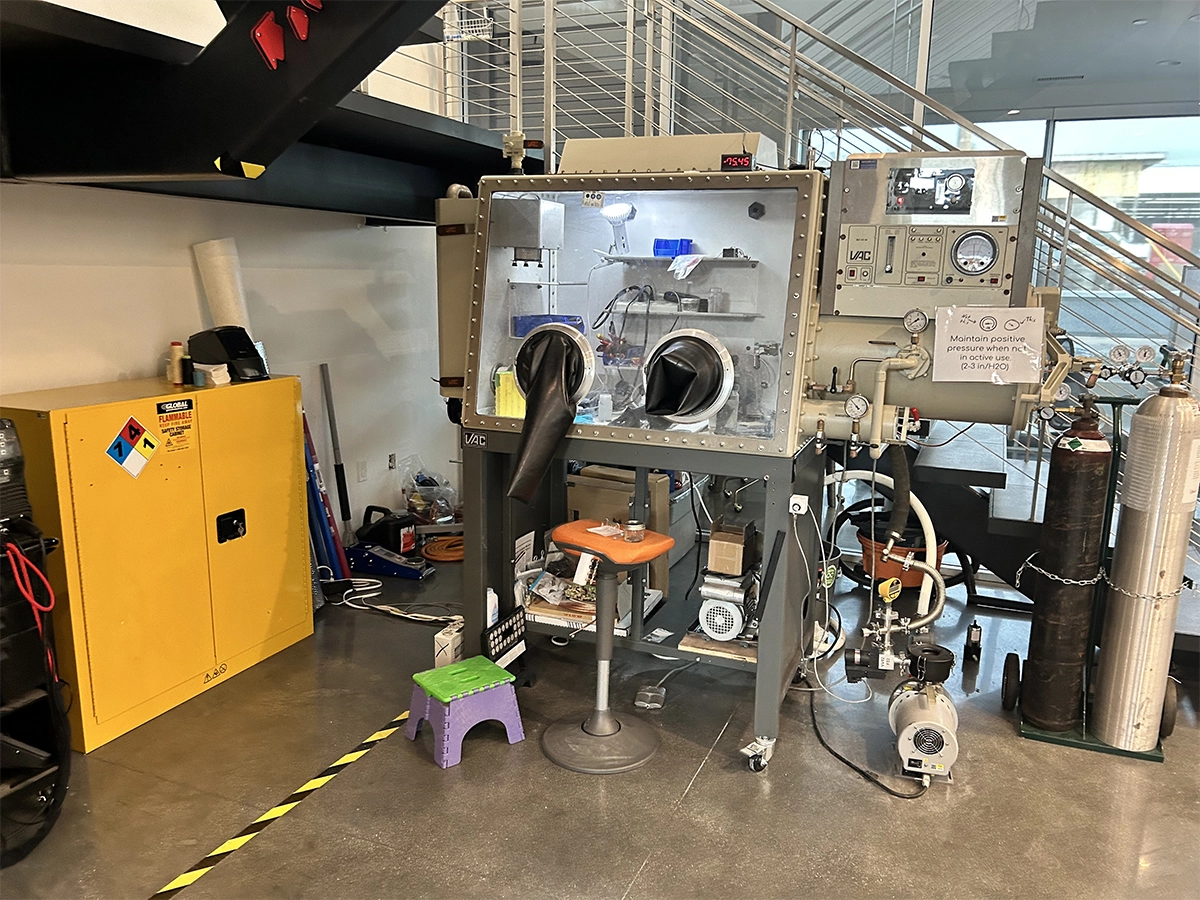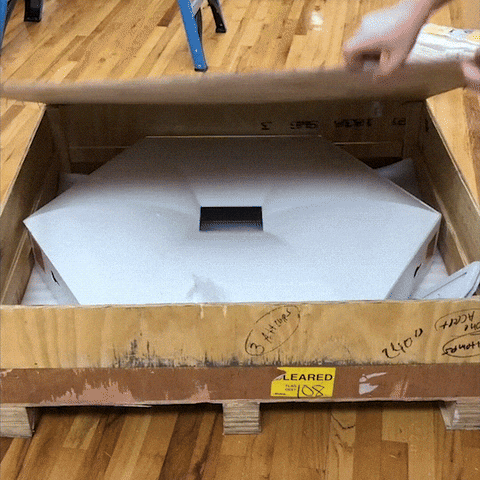We’ve secured an incredible new lab, brought on board a team of absolute rockstar battery engineers, and cranked up our research into groundbreaking lithium-alternative batteries—all thanks to you and your support. The global energy storage landscape is primed for game-changing transformation, and every milestone we crush propels us and our mission.
A Solution to the Energy Crisis
Recent global events have made our reasons for starting this company even more evident.
In the last year alone, we’ve seen the war in Ukraine result in major geopolitical influence, forcing changes in energy in every country worldwide. High-impact winter storms left hundreds of thousands in the United States without power, and never-before-seen record energy prices and their effect on the future have struck fear in politicians. Most of this has resulted in tailwinds for our company and your investment.
Growing Our Team
In the last few months, we’ve accumulated many advisors, some of whom have worked for companies like Panasonic and Tesla (the two biggest American battery companies at the moment) to help guide us through this next era. We’ve also brought on new team members and partners to help with investor relations, research and development, marketing, and capital raising.
Momentous Tailwind
We believe two gargantuan changes in the energy space are huge opportunities for our company.
Inflation Reduction Act
The first is the Inflation Reduction Act, a “historic climate and tax deal that will funnel billions of dollars into programs designed to speed the country’s clean energy transition”. There are hundreds of pages of opportunity in the $2 trillion bill (experts are saying it will be even more), and a bill of this size changes literally everything.
When we attended the Advanced Automotive Battery Conference (AABC), the Inflation Reduction Act was the only thing anyone was talking about, including some execs I saw from Ford, GM, and Panasonic. If giant companies like these are focused on what it means, then startups like ours have to pay extra special attention.
We recently met and learned from three expert lawyers guiding companies on this bill, and we are in talks with engaging someone that does analysis for a living to help educate everyone in the company.
Everyone in the energy space is waiting for guidance from the treasury, but with the current documentation, it looks possible to get up to 70% of investment in the energy sector back as tax credits. This is truly incredible when you think about the implications. If we invest $1,000,000 in technology, we could get $700,000 back to invest somewhere else.
Although nothing is guaranteed, and it will be very difficult to achieve such percentages, we are writing to give you an idea of how exciting this is for us as a company and for you as investors. We are diligently researching and analyzing how the Inflation Reduction Act plays into our current strategy and the opportunities we pursue. Regardless, the entire energy sector, especially batteries, has just received a massive win with this bill.
Net Metering 3.0
The second massive change is the shift from Net Metering 2.0 to 3.0 in California.
You may be wondering why a California law is such a big deal for our company. The reason is this: most states in the U.S. follow California law. What California passes and tests, everyone follows. That means this wave is coming to the entire country.
So let’s take a closer look at what’s going on.
Net Metering is the process of crediting solar users for the excess energy they generate and send to the grid. Under Net Metering 2.0 (or NEM 2.0), California provides $0.30 per kWh bill credit. On April 13, 2023, NEM 3.0 will reduce net metering bill credits by nearly 75% to only $0.08 per kWh bill credit. This means that solar users will lose out on 60% of lifetime savings unless they have a home battery to store their excess energy and save it for themselves.
By nature of how renewables and the grid works, it’s a natural progression where the grid ultimately does not pay for the excess electricity generated from solar panels and their users. It has already happened in Hawaii, where homeowners who only installed solar are now left being paid nothing for the electricity they send to the grid.
NEM 3.0 is just California’s evolution to this same goal. So what does it ultimately mean?
We recently met with Adam Gerza, an energy expert from Energy Toolbox who has unique access to data from solar installs, costs, and savings to homeowners. He said they “believe that 80% of new solar installs will have a battery because of the economic incentive from NEM 3.0 and other tailwinds.”
This is monumental for the battery space; it’s the kickstart to our vision of every home in America having a battery.
We are excited to have gotten a head start on two absolutely massive waves in Northern America, and we are honored to have you on board for the ride with us.
Expanding Operations, Building Value
We are actively pursuing R&D, as well as license opportunities, to help realize the final vision of our battery products. Furthermore, we are exploring every opportunity and re-evaluating priorities in each of the main energy value chains — residential, grid, and EV — based on this new flow of money.
We’ve been attending multiple industry events such as the Advanced Automotive Battery Conference, InterSolar, Energy Storage North America, and International Battery Seminar where we’ve held manufacturing and other productive conversations and even toured an American facility with talks of potential partnership.
We’ve also made advancements on the feature set and design of an LFP residential unit, all of which can be used in our future alternative lithium cell technology. As we progress, we’ll share details on how our product is as competitive, if not more competitive, than many other units out there.
As we develop a unit that matches the competitive landscape, this helps us to further establish distribution channels, partnerships, as well as provides leverage to secure the manufacturing we need to bring a breakthrough battery to the market.
Government Opportunity
Government officials managing local and national energy programs have informed me that this current landscape and our trajectory position Next Thing Technologies to work with local governments as well.
For example, a speaker from the DOE Loan Programs Office mentioned they are very interested in virtual power plants or decentralized energy available to the grid from homeowners. We are taking this into consideration as we develop our next-generation residential storage prototype and software.
Here is one challenge that is top of mind for us:
While government programs may provide a flow of money, they cannot provide a flow of talent. As a result, all the same money is chasing after the same talent.
Next Steps
As we continue to progress in R&D for our residential, commercial, and utility-scale battery units, we plan to move into a new round of capital raising in order to expand our science team with PhD battery scientists, battery engineers, cell technicians, chemists, and process engineers. These roles are valuable and will require additional capital raising to secure.
To remain agile and take advantage of the burgeoning energy landscape, we have broadened our strategy to include pursuing licensing opportunities both commercially and in university IP.
While we will face challenges, our steadfast focus on generating breakthroughs in R&D while securing lucrative licensing agreements and government contracts will further our mission to build energy-resilient communities through transformative sustainability and power decentralization.
We are truly honored to have you as an investor and partner in this process, and we look forward to embarking on this journey with you.
– Next Thing Technologies



